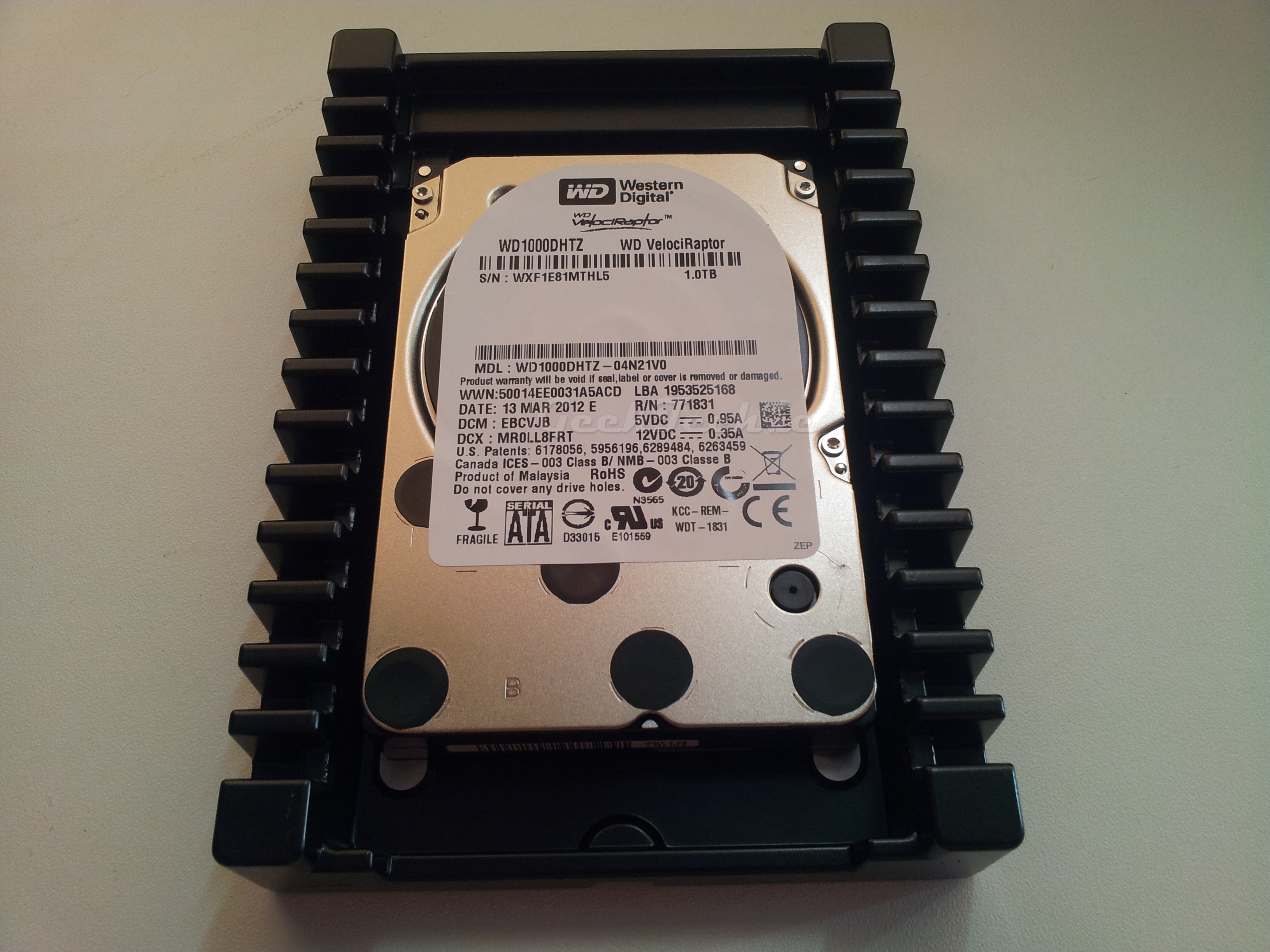
Up for review is the newest Velociraptor from Western Digital. The newest line of devices from Western Digital come in 250GB, 500GB and 1TB, for this review we will be testing the 1TB and see exactly what speeds it can provide for those anxious to get decent capacity and still have some nice speeds. When Western Digital originally released the Velociraptor drives, people were taken by storm and typically it was the only way to increase speed and such the 10,000rpm from Western Digital was the norm for those seeking a speed increase.
Now we have SSDs and while they are dropping in price. They still do not offer near the capacity as that of the Velociraptor and nowhere near the same price range. Now of course SSDs are inherently faster, they do have their own flaws and of course as it has been said before and should be well-known that they have a hefty price tag unless you can make do with a 120GB drive. That being said, we really aren’t here to compare and if we were it would be would other hard drives.
So now let’s take a look at the specs of the newest line of drives from Western Digital and compare them to their predecessors.
Specifications
There are three different versions of the new VR333M drives and the only difference is their respectable capacities and as such the amount of platters on each drive. The new model number for the series of drives has a nice hint to the size of the platter and you guessed it, WD have squeezed 333GB per platter. The specs for each are below.
WD1000DHTZ
1TB Capacity and contains three 333GB platters with 64MB DDR3 cache
WD5000HHTZ
500GB capacity and contains two 250GB platters with 64MB DDR3 cache
WD2500HHTZ
250GB capacity and contains one 250GB platter with 64MB DDR3 cache
| Specifications: | 1 TB | 500 GB | 250 GB |
| Model number: | WD1000DHTZ | WD5000HHTZ | WD2500HHTZ |
| Interface: | SATA 6 Gb/s | SATA 6 Gb/s | SATA 6 Gb/s |
| Formatted capacity: | 1 TB | 500 GB | 250 GB |
| User sectors per drive: | 1,953,525,168 | 976,773,168 | 488,397,168 |
| Advanced Format (AF): | Yes | Yes | Yes |
| SATA latching connector: | Yes | Yes | Yes |
| Form factor: | 3.5-inch | 3.5-inch | 3.5-inch |
| RoHS compliant: | Yes | Yes | Yes |
| Performance: | |||
| Data transfer rate (max): | |||
| Buffer to host: | 6 Gb/s | 6 Gb/s | 6 Gb/s |
| Host to/from drive (sustained): | 200 MB/s | 200 MB/s | 200 MB/s |
| Cache (MB): | 64 | 64 | 64 |
| Rotational speed (RPM) | 10,000 | 10,000 | 10,000 |
| Average drive ready time (sec) | 8 | 8 | 8 |
| Reliability/Data Integrity: | |||
| Load/unload cycles | 600,000 | 600,000 | 600,000 |
| Power Management: | |||
| 12VDC (A, max): | 1.8 | 1.8 | 1.8 |
| Average power requirements (W): | |||
| Random Read/Write: | 5.1 | 5.1 | 5.1 |
| Sequential Read/Write: | 5.8 | 5.8 | 5.8 |
| Idle | 4.2 | 4.2 | 4.2 |
| Standby and Sleep | 1.1 | 1.1 | 1.1 |
| Environmental Specifications: | |||
| Temperature (°C): | |||
| Operating: | 5 to 55 | 5 to 55 | 5 to 55 |
| Non-operating: | -40 to 70 | -40 to 70 | -40 to 70 |
| Shock (Gs): | |||
| Operating (2 ms, read/write): | 30 | 30 | 30 |
| Operating (2 ms, read): | 65 | 65 | 65 |
| Non-operating (2 ms): | 300 | 300 | 300 |
| Average acoustics (dBA): | |||
| Idle mode: | 30 | 30 | 30 |
| Performance seek mode: | 37 | 37 | 37 |
| Physical Dimensions: | |||
| Height (in./mm, max): | 1.028/26.1 | 1.028/26.1 | 1.028/26.1 |
| Length (in./mm, max): | 5.787/147 | 5.787/147 | 5.787/147 |
| Width (in./mm, ± .01 in.): | 4/101.6 | 4/101.6 | 4/101.6 |
| Weight (lb./kg, ± 10%): | 1.10/0.50 | 1.10/0.50 | 1.10/0.50 |
The new devices have a stated sustained transfer speed of 200MB/s. So before we get onto the testing, Let’s take a look at some nice shots of the device. Head over to the next page to continue
